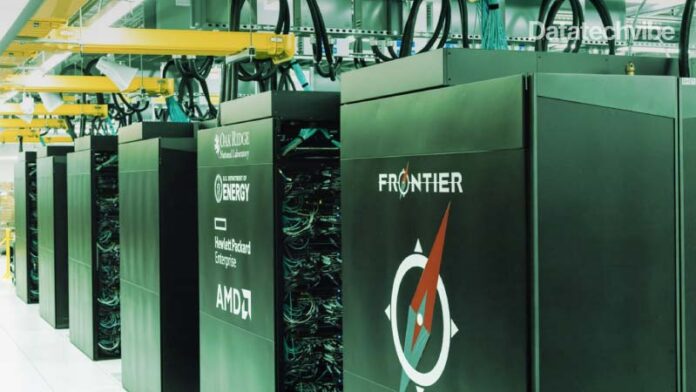The AMD-powered Frontier supercomputer is now the first officially recognised exascale supercomputer in the world, topping 1.102 ExaFlop/s during a sustained Linpack run.
That ranks first on the newly-released Top500 list of the world’s fastest supercomputers as the number of AMD-powered systems on the list has expanded significantly this year. Frontier not only overtakes the previous leader, Japan’s Fugaku but blows it out of the water; in fact, Frontier is faster than the next seven supercomputers on the list, combined. Notably, while Frontier hit 1.1 ExaFlops during a sustained Linpack FP64 benchmark, the system delivers up to 1.69 ExaFlops in peak performance but has headroom to hit 2 ExaFlops after more tuning. For reference, one ExaFlop equals one quintillion floating-point operations per second.
The Frontier also ranks as the fastest AI system in the world, giving 6.88 ExaFlops of mixed-precision performance. This equates to 68 million instructions per second for each 86 billion neurons in the brand, giving you an idea of the amount of computing power the fastest supercomputer holds. The Frontier is also number one on the Green500 list, meaning that it is also the most power-efficient supercomputer in the world.
The Frontier supercomputer is built by HPE and is installed in the US Department of Energy’s (DOE) Oak Rigde National laboratory in Tennessee. The system features 9,408 compute nodes, each with one 64-core AMD CPU paired with 512GB of DDR4 RAM and four AMD Radeon Instinct MI250X GPUs. These nodes are spread among 74 HPE Cray EX cabinets, weighing more than 3,600kg. Further, the CPUs and GPUs are tied together using the Ethernet-based HPE Cray Slingshot-11 networking fabric. The entire system uses water cooling to keep the heat in check, with 6,000 gallons of water moved through the system by 350-horsepower pumps, these pumps could fill an Olympic-sized swimming pool in just 30 minutes.
To assemble the Frontier, the engineers had to source 60 million parts with 685 different part numbers to build the system. The chip shortage hit during construction, impacting 167 of those part numbers. The chip shortage also slowed down the build as it impacted 167 of those parts, so ORNL found itself two million pieces short. AMD also came across issues as 15 part numbers for the MI200 GPUs encountered shortages.
In terms of power consumption, the system peaks at 29 MW of power, but Frontier’s mechanical plant can cool up to 40 MW of computational power, which is equivalent to 30,000 US homes. This plant can be expanded up to 70 MW, leaving room for future growth.
This supercomputer has given AMD a significant edge over rival Intel, whose Summit was the most powerful supercomputer in the world before Japan’s Fugaku. Intel, however, is working to build the Aurora supercomputer, which is said to come with up to 2 ExaFlops of performance.









